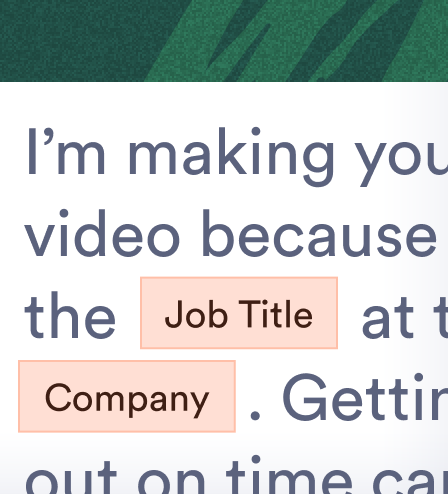AI Avatars: How We Use It & Real-World Success Stories
In this session, we show you how Vidyard’s sales reps use AI Avatars to save time and scale up their outreach. Gain insights into our decision-making process for choosing whether …

As the old saying goes, you need to strike while the iron is hot. When a prospect has shown interest in your business by engaging with key content, downloaded a guide, or requested more information about a product or service, use this template to keep the conversation going.
✨ Use AI Avatars to easily send follow-up messages to any prospect using a hyper-realistic AI avatar that looks and sounds just like you.
Inbound sales and marketing is a modern business process made (arguably) most famous by HubSpot. It’s a process involving attracting qualified leads through marketing content, before following up with them through sales outreach activities.
It’s a simple and powerful process that has come to define most of modern sales. With the power of customer relationship management (CRM) software, you can keep track of a prospect’s activity on your website and tailor your outreach efforts based on the actions they take. Some of these actions can include a form fill, a resource download, or a pageview.
Inbound activity follow-ups are the sales activities that take place as a result of these actions, to engage with a prospect to learn more about their problems and challenges to determine if your product or service can solve their needs.

Inbound activity follow-ups are a powerful and extremely successful way to connect with your prospects. But how do you do it without coming off as…well, creepy? Visitor tracking is a reality of almost every modern website, but responsible use of that information is extremely important.
It’s worth noting that if you reach out to a lead within the first five minutes, the odds of contacting them are 100 times higher, and the chances of qualifying them are 21 times higher (compared to waiting 30 minutes or more). Getting in touch immediately feels a bit weird, and there’s a definite concern about coming off as creepy. That’s why it’s extremely important to make your inbound activity follow-up relevant and personalized to your prospect.
When a prospect engages with inbound content on your website, they are indicating some form of interest, but don’t make any assumptions about the extent of that interest. Use the inbound activity follow-up template to structure your video messaging so it’s relevant to the content your prospect is interested in. If they download a cybersecurity guide (as in the example above), don’t assume that they’re ready to purchase today. Use this valuable information as a way to provide value to your prospect.
The goal of your inbound activity follow-up messaging is to get a better understanding of your prospect’s problems and challenges. Use this as an opportunity to uncover why they are interested in your product or service, rather than focusing on the hard sale.
As a methodology, inbound is focused on qualifying prospects in order to improve the efficiency of the sales cycle. The inbound activity follow-up is a great first step in making this process a success.
Obviously, you’ll want to use this template to send an inbound activity follow-up video after, well, after inbound activity. As we’ve already mentioned, the exact timing of this video type is really up to you.
No matter when you send that inbound activity follow-up video, to ensure you’re successful, make your video relevant to your prospect and the content that triggered the inbound activity. You’re already likely to increase replies by 26% using video, but a relevant and useful inbound activity follow-up will help you to better qualify that inbound lead.